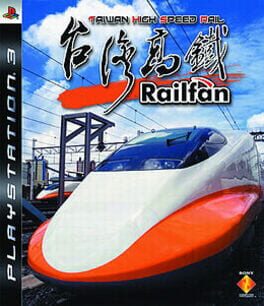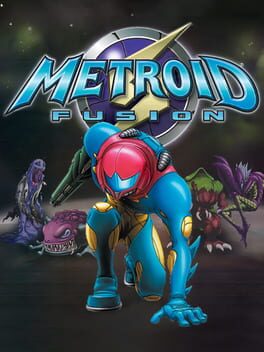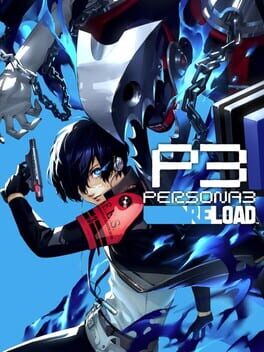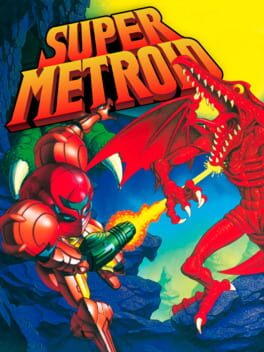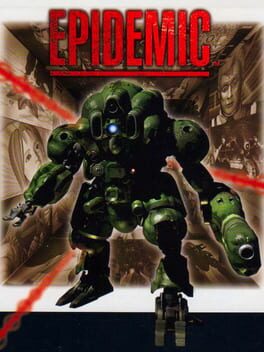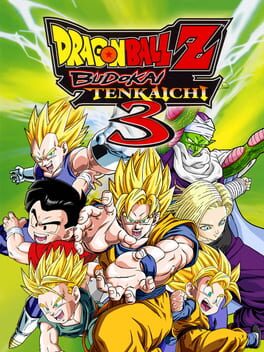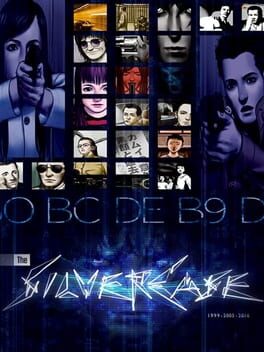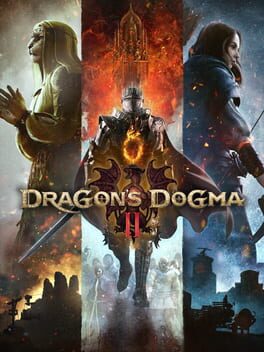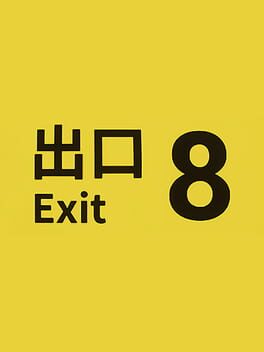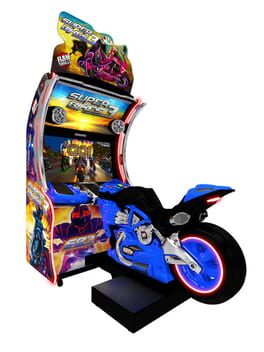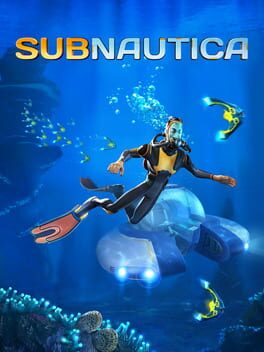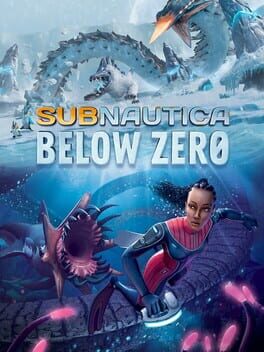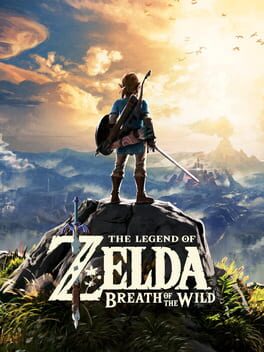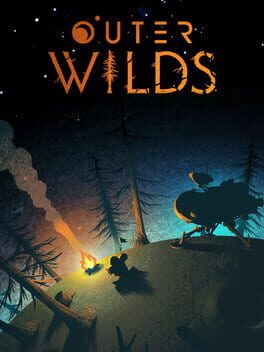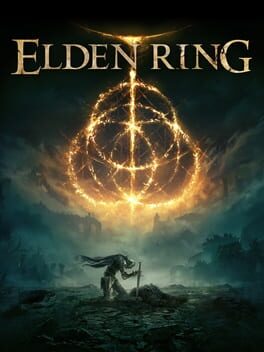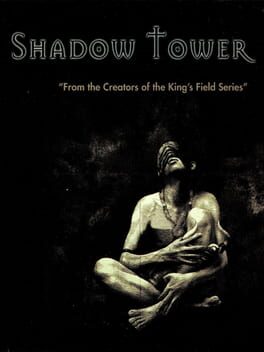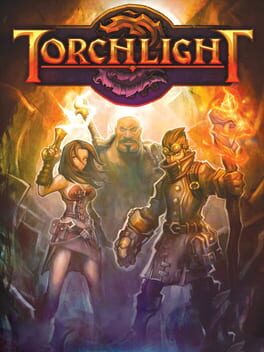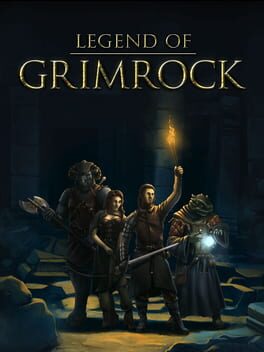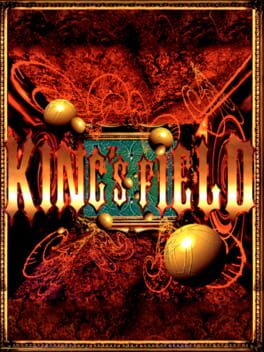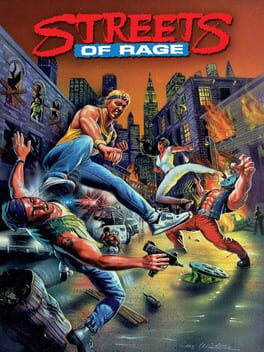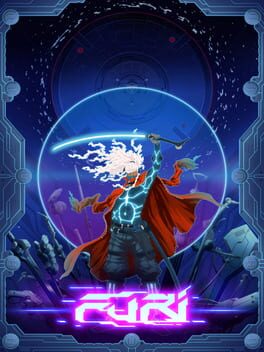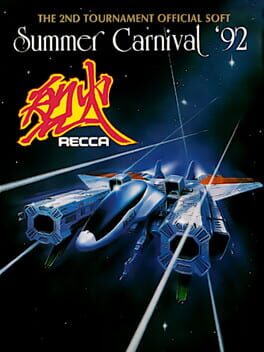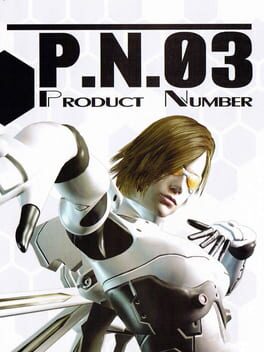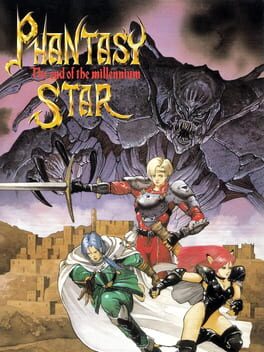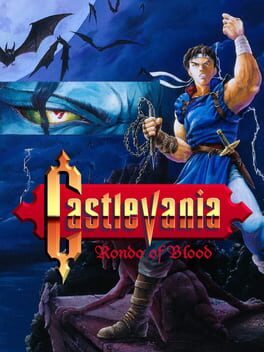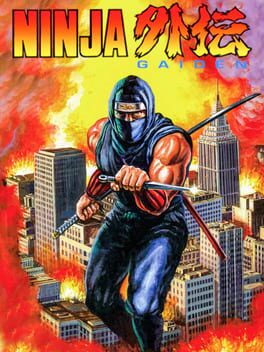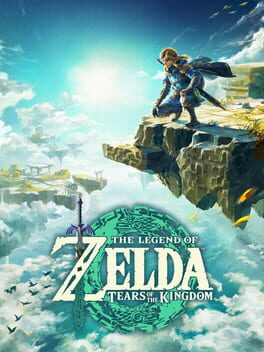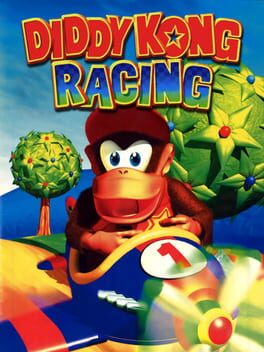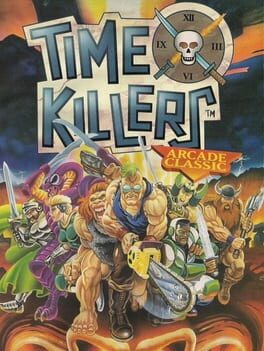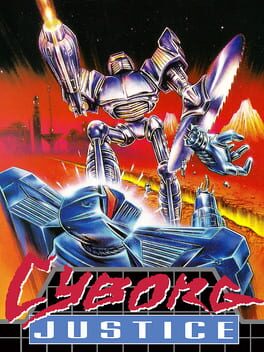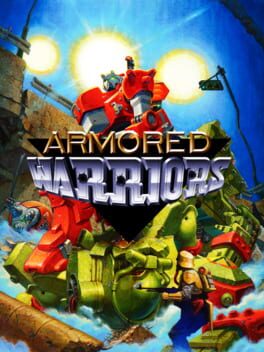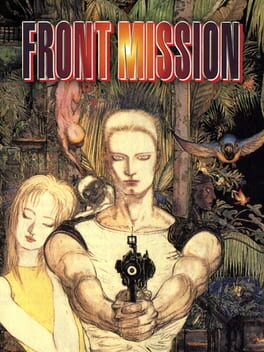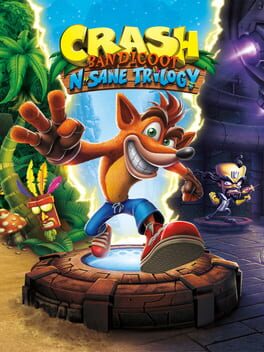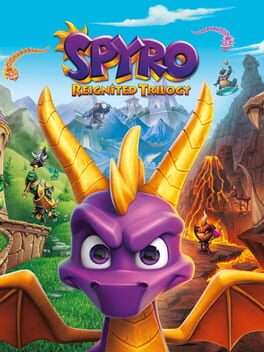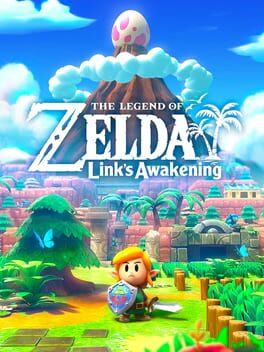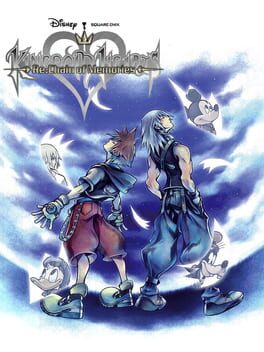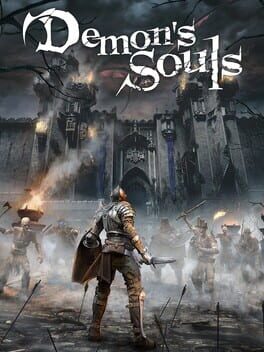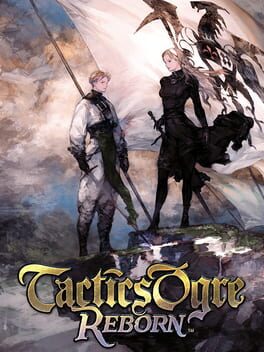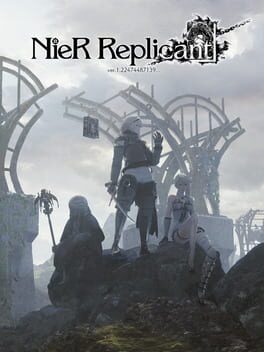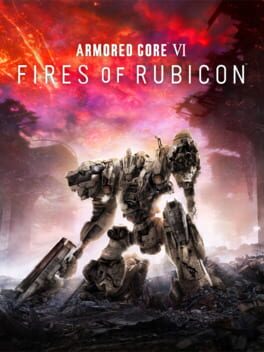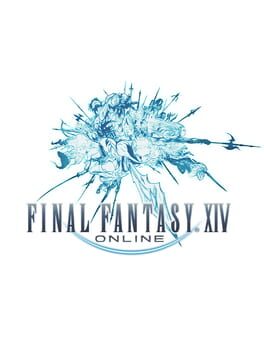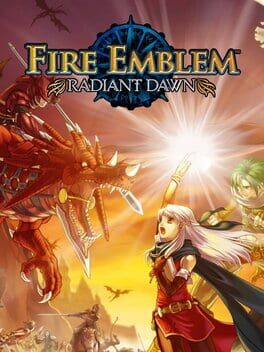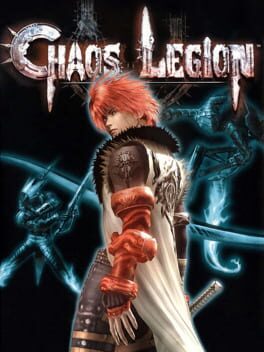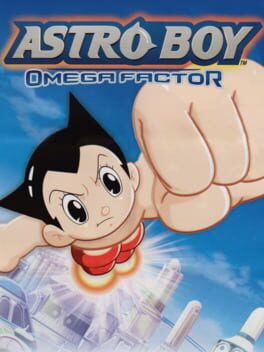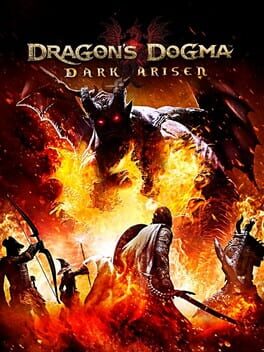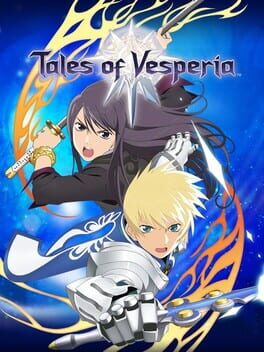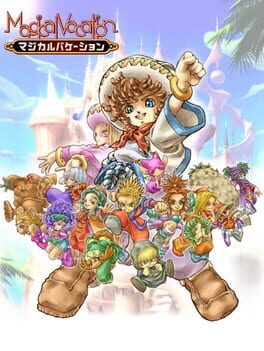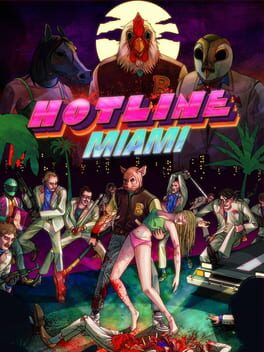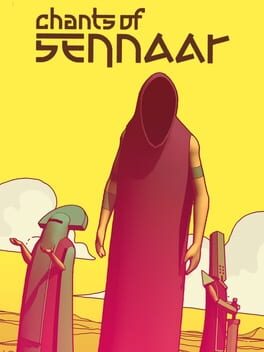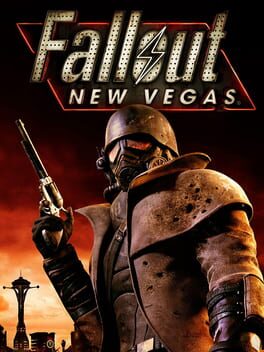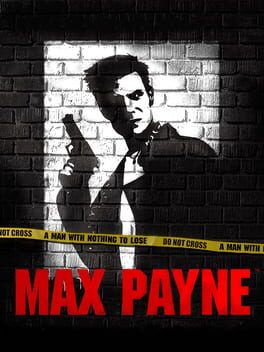Fauxscerf
237 reviews liked by Fauxscerf
Taipei ➡️ Zuoying (Kaohsiung City)
Duration: 01h34
Train Model: THSR 700T
Train No: 0145
Number of carriages: 12 (1 business car, 11 standard cars)
Number of seats: 989 (66 seats in business car, 923 seats in standard cars)
Seat allocation: 2+2 in business car (4 seats each row); 2+3 in standard car (5 seats each row)
Top operation speed: 300 km/hr
Length of train: 304 m
Electric system: 25 KV 60 Hz AC
Welcome aboard Taiwan High Speed Rail! This train is bound from Taipei, to Zuoying. All seats are reserved. Please make sure you are in the correct seat. We wish you a pleasant journey. 🌸
Slim but unquestionably reverent and adorable. Maybe I'm gassing this up too much but it's nice to see the Trainguy subgenre have a little more meat on its bones beyond polygonal simulations and instead could be secret FMV games - accelerating and decelerating your train like it's a really meditative Superhot or something. Railfan seems very keen to show you a brief look into late-00's rail transit life, right down to explaining the historicity of the locales the line calls at, the specs of the train, even local cuisine!
Looking up the devs of the Railfan titles to find that they are predominantly dedicated to educative tactile train driving simulations, still making use of full-motion video rather than computer generated sims. I dunno man I think that's neat. I've seen people with the Densha de Go joystick but now I want a carriage door peripheral for me to lean out of.
Duration: 01h34
Train Model: THSR 700T
Train No: 0145
Number of carriages: 12 (1 business car, 11 standard cars)
Number of seats: 989 (66 seats in business car, 923 seats in standard cars)
Seat allocation: 2+2 in business car (4 seats each row); 2+3 in standard car (5 seats each row)
Top operation speed: 300 km/hr
Length of train: 304 m
Electric system: 25 KV 60 Hz AC
Welcome aboard Taiwan High Speed Rail! This train is bound from Taipei, to Zuoying. All seats are reserved. Please make sure you are in the correct seat. We wish you a pleasant journey. 🌸
Slim but unquestionably reverent and adorable. Maybe I'm gassing this up too much but it's nice to see the Trainguy subgenre have a little more meat on its bones beyond polygonal simulations and instead could be secret FMV games - accelerating and decelerating your train like it's a really meditative Superhot or something. Railfan seems very keen to show you a brief look into late-00's rail transit life, right down to explaining the historicity of the locales the line calls at, the specs of the train, even local cuisine!
Looking up the devs of the Railfan titles to find that they are predominantly dedicated to educative tactile train driving simulations, still making use of full-motion video rather than computer generated sims. I dunno man I think that's neat. I've seen people with the Densha de Go joystick but now I want a carriage door peripheral for me to lean out of.
Metroid Fusion
2002
the discomfort zone got too comfortable so we made the comfort zone discomfortable. samus: meet samus
where super dove uncritically into the power fantasy that metroid II (the game with a literal Genocide Counter in the UI) unmasked and deflated, this feels like it's turning it inward against you personally. Your body, Your likeness, and Your autonomy hijacked; Your celebratory past tense role as (repeated) casual annihilationist to reckon with and cower from
it operates as something of a Super Negative Image Metroid: an inversion right down to the uncomfortable, choking grip of the direction. all that clammy ADAMsplaining, those sequestered zones, the redline urgency; everything's dialed perfectly into the exact same channel with uniform intent. even the woozy alien psychedelia's been spirited away in favour of clinical, detached interiors and astroturfed xerox biomes with some of the most appropriately sterile Oops No Backlight lighting on the GBA
and no, it obviously doesn't accomplish the same things as its predecessors, but it's not attempting to. this is a game about lack of control, and altering the format would be akin to breaking the spinal column that holds it upright. fusion's big successes (the pacing, brevity, tonal and thematic consonance, and delicate curation of tension and challenge) are the result of its structural changes. being shunted around a tiny sarcophagus isn't a flaw, it's the entire premise. duh
even without all that though it's impossible for me not to love a game with nightmare, the Profaned Baja Blast Suit, AQA's sunken banger, shots like this, and those absolutely psychotic ridley screams
quite possibly the best SA-X heavy fusion since the sultry sounds of steely dan
where super dove uncritically into the power fantasy that metroid II (the game with a literal Genocide Counter in the UI) unmasked and deflated, this feels like it's turning it inward against you personally. Your body, Your likeness, and Your autonomy hijacked; Your celebratory past tense role as (repeated) casual annihilationist to reckon with and cower from
it operates as something of a Super Negative Image Metroid: an inversion right down to the uncomfortable, choking grip of the direction. all that clammy ADAMsplaining, those sequestered zones, the redline urgency; everything's dialed perfectly into the exact same channel with uniform intent. even the woozy alien psychedelia's been spirited away in favour of clinical, detached interiors and astroturfed xerox biomes with some of the most appropriately sterile Oops No Backlight lighting on the GBA
and no, it obviously doesn't accomplish the same things as its predecessors, but it's not attempting to. this is a game about lack of control, and altering the format would be akin to breaking the spinal column that holds it upright. fusion's big successes (the pacing, brevity, tonal and thematic consonance, and delicate curation of tension and challenge) are the result of its structural changes. being shunted around a tiny sarcophagus isn't a flaw, it's the entire premise. duh
even without all that though it's impossible for me not to love a game with nightmare, the Profaned Baja Blast Suit, AQA's sunken banger, shots like this, and those absolutely psychotic ridley screams
quite possibly the best SA-X heavy fusion since the sultry sounds of steely dan
Persona 3 Reload
2024
Super Metroid
1994
outside of the (understandably) on-the-nose coloured doorways nearly every instance of environmental interaction is rich and tactile. thirty years later it's still a wonder to grope and paw at every (Possibly Maybe) malleable surface and leverage every new upgrade toward greater structural manipulation and command
in ensuring how and when are given as much significance as what and where it forms a relationship between actor and environment that bears uncommonly personal patterns and markings as you learn to use Your body as an implement to interface with the world. sidepaths and back alleys that carve Under - Over - Through reshape the familiar thru layered mechanical discovery and shift the internal v external dynamic in turn; mastery of the self begetting exponential mastery of the other
a fitting problem then that the biocircuitry, plunging intestinal mazes, and gloomy dark ambient synthesis quickly become less something to endure so much as to dominate; the dissonance for show, and the brutality nakedly glamorous and one sided. so much of it exists in service to the pursuit of (Your) power, kneeling with its neck outstretched waiting to feel bones shatter for Your gratification. sure, I feel obscenely powerful, but I'd rather feel anything else
strange scene it is
every thing in flames
in ensuring how and when are given as much significance as what and where it forms a relationship between actor and environment that bears uncommonly personal patterns and markings as you learn to use Your body as an implement to interface with the world. sidepaths and back alleys that carve Under - Over - Through reshape the familiar thru layered mechanical discovery and shift the internal v external dynamic in turn; mastery of the self begetting exponential mastery of the other
a fitting problem then that the biocircuitry, plunging intestinal mazes, and gloomy dark ambient synthesis quickly become less something to endure so much as to dominate; the dissonance for show, and the brutality nakedly glamorous and one sided. so much of it exists in service to the pursuit of (Your) power, kneeling with its neck outstretched waiting to feel bones shatter for Your gratification. sure, I feel obscenely powerful, but I'd rather feel anything else
strange scene it is
every thing in flames
Epidemic
1996
it's not hard to understand why sony abandoned epidemic's original title for its western release; this is a massive improvement over kileak in almost every way (primarily because it isn't aping iron angel of the apocalypse anymore)
first, the almost: narratively it tries harder, but i'd be lying if i said that was to any greater outcome. cutscenes are pretty whatever and the localization is so piss-poor that it's often hard to tell what's going on or why you should even care to begin with
the core gameplay though? it's actually fun this time around because levels aren't entirely composed of 1x1 corridors and 4x4 squares! enemy fire is avoidable now and your mech feels equal parts weighty and satisfying to maneuver. the new ability to jet-boost through halls and around corners especially makes backtracking a nonissue and has a certain slickness to it that i'd compare to something like f-zero or wipeout. excluding deaths i logged about 3-4 hours and i could easily see that being cut down to 30-60 minutes on replays due to this mechanic alone
ammo and energy are also handled better - mainly because weapon energy recharges and boost juice occupies its own meter. can't say the boss fights are any more captivating as they're all still solvable by standing still or circle strafing while firing, but they serve more as a health/ammo check than anything else and i'm alright with that
i can't help but wish kileak's body horror elements were improved upon instead of completely abandoned, but i'll still take this over it any day. can sincerely recommend to anyone looking for an unconventional, mech-based fps
first, the almost: narratively it tries harder, but i'd be lying if i said that was to any greater outcome. cutscenes are pretty whatever and the localization is so piss-poor that it's often hard to tell what's going on or why you should even care to begin with
the core gameplay though? it's actually fun this time around because levels aren't entirely composed of 1x1 corridors and 4x4 squares! enemy fire is avoidable now and your mech feels equal parts weighty and satisfying to maneuver. the new ability to jet-boost through halls and around corners especially makes backtracking a nonissue and has a certain slickness to it that i'd compare to something like f-zero or wipeout. excluding deaths i logged about 3-4 hours and i could easily see that being cut down to 30-60 minutes on replays due to this mechanic alone
ammo and energy are also handled better - mainly because weapon energy recharges and boost juice occupies its own meter. can't say the boss fights are any more captivating as they're all still solvable by standing still or circle strafing while firing, but they serve more as a health/ammo check than anything else and i'm alright with that
i can't help but wish kileak's body horror elements were improved upon instead of completely abandoned, but i'll still take this over it any day. can sincerely recommend to anyone looking for an unconventional, mech-based fps
The Silver Case
2016
This review contains spoilers
In a game, let alone continuity, lousy with sharp, confrontational artistic direction, it’s one as simple as the back of the box that continues to work its way through me. It’s the illustration of Kusabi, Sakura, and Kosaka, in particular - Sakura’s exaggerated frown extends out of the image towards you while Kusabi and Kosaka converse around her. If you’ve played the game, you’re aware that this configuration can only happen in the events proceeding the finale (a massive torpedo-spoiler on the back of the box, funny!). By extension, this also means that the illustration is, to whatever degree, a reflection on the status quo after case#5:lifecut, i.e. the chapter of the game where everything boils over, a majority of the Transmitter cast straight up dies, and radical actions by the hands of the remaining cast occur.
I love this illustration for a few reasons - for one, Takashi Miyamoto captures a sense of mundanity so well. In game, you’re never really able to bear witness to a Kusabi at peace in ordinary life, and here he’s beautifully human in his pose - well-earned after his arc through the game. Secondly, through that same focus on the mundane lies a commentary on the dynamics these characters are engaged in. I don’t think it’s much of a stretch to imply that the gender dynamics put forth here can be seen as a disappointing reminder that leaving Kusabi (love ‘em as I do) as the sole surviving veteran of the HCU means that the same bitterness which ostracized Hachisuka, possibly enabling something within to give in to her inevitable death-filing and appearance as Ayame, is likely still in the air. But these observations pale, in my opinion, to the context.
As she continues ascending the 24th Ward’s crime department, after bearing witness to the very operation that almost(/successfully?) doomed her and the player character to a life of artificial personhood, and after witnessing the takedown of the two major antagonists of the game, Nezu and (eventually) Uminosuke, she still frowns at us, the player. Why? I thought danwa was a happy ending.
-
TSC is one of few games I can think of that really eludes simple genre description. Sure, it’s a crime procedural, up until it isn’t. It’s a conspiracy thriller... in spots. It’s Lynchian surrealist dystopia? Alright we’re just gonna say words now, I guess? The only thing that comes to mind for descriptors is, like, slipstream fiction, which, given 25W references seminal proto-Cyberpunk novella The Girl Who Was Plugged In, seems apt enough to settle on. I won’t even evoke the P-word. The one that rhymes with “toast auburn.”
But really, this thought exercise is all just a veiled move to get you to wonder about the limitation of genre fiction as it applies to TSC, and poke at its aspirations. For this to be a standard crime procedural, you’d expect the HCU to... function in some capacity? And conspiracy thriller’s a no-go considering the weight that spirituality and all other intangibles have here, in my opinion. The way I’ll continue from this point to put it is thus: the Mikumo 77 incident, the murder of Kamui by the underworld factions, and the ensuing Shelter Kids policy reverberate through the story on many different frequencies, and the effect of it all is so bleak that only genre convention can make the discussion palatable as fiction. But it doesn’t always cover it: the melancholic, ambling work of Tokio through Placebo, the brain-swelling conflict of information in Transmitter, I think both serve as a reminder that there’s no easy out from underneath the sin of government control. It’s no surprise, I guess, that the symptoms get much, much worse when we return to Kanto in The 25th Ward.
-
Kamuidrome thru danwa (and the equivalent reports from Placebo’s end) are so dizzying and hard to come to terms with that I have literally shaved my head since first playing this game. This is actually true! I have death-filed!
That said, I feel like an essential piece of advice I could give someone who’s in for their first time is to enact judgment on the information based on who and when it’s coming from. This is easy enough in some cases - I think most people are primed from birth to hate pedo-fascist Nakategawa enough to not mind his words. But even fan-favorite Kusabi, for instance... this entire game is a slow fade-to-white for him as he unlearns an entire ideology of criminality equating plague, one he’s enforced so much with violence, not just as a cop, but as a particularly fucked up cop. In the beginning, I wouldn’t blame you for sticking with the competent elder authority of the cast, but if the ending moments of Parade don’t convince you to question the prior chapters, then I don’t know what will. The state of this world can be figured out with relative certainty as long as you keep track of where you are in the game’s web.
Though deeply confusing (& not helped by a localization that I can only describe as “challenging” (no shade to Grasshopper James btw, I can only imagine trying to piece this together 😭)), this game masterfully tiers up its information in a way that makes the trek through the underbelly of the 24th Ward feel so uniquely haunting. While certain aspects (the bench-warming faction war at the batting center comes to mind) do feel a bit bizarre and maybe even underdeveloped as words on a (cyber)page, the thematic tapestry of this game is exceptionally rich, even among other lauded-for-thematic-richness games. I’m a lifelong MGS fan and even I have to admit that after coming to conclusions confident enough to type words about, I think we might be seeing a lunch-eating of unseen proportions.
I love this illustration for a few reasons - for one, Takashi Miyamoto captures a sense of mundanity so well. In game, you’re never really able to bear witness to a Kusabi at peace in ordinary life, and here he’s beautifully human in his pose - well-earned after his arc through the game. Secondly, through that same focus on the mundane lies a commentary on the dynamics these characters are engaged in. I don’t think it’s much of a stretch to imply that the gender dynamics put forth here can be seen as a disappointing reminder that leaving Kusabi (love ‘em as I do) as the sole surviving veteran of the HCU means that the same bitterness which ostracized Hachisuka, possibly enabling something within to give in to her inevitable death-filing and appearance as Ayame, is likely still in the air. But these observations pale, in my opinion, to the context.
As she continues ascending the 24th Ward’s crime department, after bearing witness to the very operation that almost(/successfully?) doomed her and the player character to a life of artificial personhood, and after witnessing the takedown of the two major antagonists of the game, Nezu and (eventually) Uminosuke, she still frowns at us, the player. Why? I thought danwa was a happy ending.
-
TSC is one of few games I can think of that really eludes simple genre description. Sure, it’s a crime procedural, up until it isn’t. It’s a conspiracy thriller... in spots. It’s Lynchian surrealist dystopia? Alright we’re just gonna say words now, I guess? The only thing that comes to mind for descriptors is, like, slipstream fiction, which, given 25W references seminal proto-Cyberpunk novella The Girl Who Was Plugged In, seems apt enough to settle on. I won’t even evoke the P-word. The one that rhymes with “toast auburn.”
But really, this thought exercise is all just a veiled move to get you to wonder about the limitation of genre fiction as it applies to TSC, and poke at its aspirations. For this to be a standard crime procedural, you’d expect the HCU to... function in some capacity? And conspiracy thriller’s a no-go considering the weight that spirituality and all other intangibles have here, in my opinion. The way I’ll continue from this point to put it is thus: the Mikumo 77 incident, the murder of Kamui by the underworld factions, and the ensuing Shelter Kids policy reverberate through the story on many different frequencies, and the effect of it all is so bleak that only genre convention can make the discussion palatable as fiction. But it doesn’t always cover it: the melancholic, ambling work of Tokio through Placebo, the brain-swelling conflict of information in Transmitter, I think both serve as a reminder that there’s no easy out from underneath the sin of government control. It’s no surprise, I guess, that the symptoms get much, much worse when we return to Kanto in The 25th Ward.
-
Kamuidrome thru danwa (and the equivalent reports from Placebo’s end) are so dizzying and hard to come to terms with that I have literally shaved my head since first playing this game. This is actually true! I have death-filed!
That said, I feel like an essential piece of advice I could give someone who’s in for their first time is to enact judgment on the information based on who and when it’s coming from. This is easy enough in some cases - I think most people are primed from birth to hate pedo-fascist Nakategawa enough to not mind his words. But even fan-favorite Kusabi, for instance... this entire game is a slow fade-to-white for him as he unlearns an entire ideology of criminality equating plague, one he’s enforced so much with violence, not just as a cop, but as a particularly fucked up cop. In the beginning, I wouldn’t blame you for sticking with the competent elder authority of the cast, but if the ending moments of Parade don’t convince you to question the prior chapters, then I don’t know what will. The state of this world can be figured out with relative certainty as long as you keep track of where you are in the game’s web.
Though deeply confusing (& not helped by a localization that I can only describe as “challenging” (no shade to Grasshopper James btw, I can only imagine trying to piece this together 😭)), this game masterfully tiers up its information in a way that makes the trek through the underbelly of the 24th Ward feel so uniquely haunting. While certain aspects (the bench-warming faction war at the batting center comes to mind) do feel a bit bizarre and maybe even underdeveloped as words on a (cyber)page, the thematic tapestry of this game is exceptionally rich, even among other lauded-for-thematic-richness games. I’m a lifelong MGS fan and even I have to admit that after coming to conclusions confident enough to type words about, I think we might be seeing a lunch-eating of unseen proportions.
Dragon's Dogma II
2024
"The world once shaped by the great will has come to an end.
It was a foregone conclusion. All is preordained.
If in spite of this you still have the will to fight, now is your chance to prove it."
This is a particularly difficult game for me to write about because I want to greedily compare and contrast every ballhair with the first title’s, just so I can diagnose exactly where my issues with it lie - why a game that is functionally so similar in DNA to one of my all-timers doesn’t hit the mark. Personally speakin, the long & short of it is that Dragon’s Dogma 2 is something of a sidegrade to the original title that distances itself too much from what I found spectacular about it to begin with.
Possibly my favourite element of Dragon’s Dogma 2 is one that could be felt from the moment you first gain control of your character. There’s a palpable heft to character locomotion, complimented by the multilayered textuality of the land itself & the threats of wrong turns into the unknown or slipping off a slick cliffside to your untimely demise - it leans wonderfully far into the concept of traversal being a battle unto itself. As was the case with DD1, being tasked to travel from safety to a marker deep into the fog of war is never a simple request. Goblins, ogres, harpies, and whoever else decides to grace you with their presence are waiting in the bushes to act as regular speedbumps to be carefully considered and planned for accordingly.
Where DD2 slips at this for me is in how little it reciprocates for what it demands. This is a sequel that has ballooned itself in scale to a dizzying near 5x the original map’s size, but hasn’t developed the enemy roster nor the environmental design acumen to make use of it. Take for instance that DD2 has fifty caves strewn around its tectonic world map, and I don’t think a single one is as impressive as one that could be found in DD1. Where the caves/dungeons in DD1 were concerned, there would be special objectives relevant to the overall story, a person you were going there on behalf of who represented a town or group, they would unlock shortcuts for faster world traversal and upon repeat visits you’d notice the location’s role in the world change for the denizens. They would be densely designed so that every corner was worth being scanned to the best of your ability for pickups, shortcuts, levers, climbing points - lending to the almost DnD-esque adventure core followed passionately by the game’s design. Hell, the locales would generally sound and look different too, built to purpose so as to become plausible enough to justify their utility in the world and lend credence to exploring them.
Compared to that, DD2 has shockingly little of this. Its myriad nondescript caves wallhugging the world could scarcely be five prefab rooms tied into a loop to house a few potions, or some equipment you could find at a store. No unique gimmicks or trials, only populated by a handful of gobbos and maybe a midboss as a treat. I feel that Dragonsbreath Tower was supposed to act as something of a callback to Bluemoon Tower from DD1 - it being a perilous journey across a handful of biomes towards a crumbling hanging dungeon that houses a flying peril, but it’s so bereft of pomp and confidence. A truly memetic core routine that made me think less of adventures and more of waypoints and upgrade materials. I want to use a Neuralyzer to remove BotW shrines from the face of the earth. And god why is none of the new music good.
DD2 implies at a big story, but to me it felt like nothing came together. I had no idea who anyone was supposed to be beyond Brant, Sven and Wilhelmina. DD1’s progression from Wyrmhunt -> Investigate the Cult -> Kill Grigori -> Deal with the Everfall -> Confront the Seneschal was great, and throughout all of that you kept up with characters like the King and got to see his downfall. The writing and delivery of the cult leader and Grigori himself far surpasses anything in DD2, despite having very similar subjects. Outpaced by DD1 in setpieces and pop-offs and thematics. There's barely any antagonistic people in the game and once you get to Battahl it feels as though the game trails off like it’s got dementia.
It's a completely different kind of design that, sure, encourages player freedom - but communicates it in this really loose way that I just don't care about. I spent much of my playthrough having no idea what I was doing besides wiping off the blank smudges of world map. What expounds this problem is that quest discoverability is astonishingly low here, oftentimes made worse by restricting itself to AI astrology, time of day, relationship levels (??). The duke could stand to commission a farcking quest board imo!!! I won’t kid myself and say that the quests in DD1 were even a bronze standard, but they worked and communicated exactly what they needed to do while also leaving open ends available for interpretation. But in DD2, they’re just awful, I absolutely hated the experience of trying to clear up Vermund’s quests before pushing Main Story progression and at this point I wish I cared as little as the game does. What need is there for almost all of them to have a “return to me in a few days” component in a game with such limited fast travel, do you want me to throw you into the brine? Frankly the game is never as interesting as when you're doing Sphinx riddles.
Combat’s good enough, I do enjoy how the interplay of systems would present the player with all sorts of unique situations, but even these can and do begin to feel samey when a very slim enemy pool on shuffle. What makes these emergent conflicts even less impressive to me is how I can't help but feel as though the ogres, trolls and chimeras in particular have had their difficulties neutered. The hardest time I had with the chimera was during a sidequest where you had to get the poison-lover to be doused in chimeric snake venom. They're barely a threat otherwise, and can either be chain stunlocked with well-placed shots or slashes, or get too lost in their own attack animations to really hit anyone. Comparing these enemies to DD1 where climbing was far more effective at dealing damage encouraged the player to get real up close to them and it felt like their AI knew how to deal with that. Like when I fought the Medusa it felt like they didn't have any idea where the party even was. I think if the hardest encounters the game has to offer is Too Many Goblins we have a problem. (Dullahan is very cool though)
I’m not miffed no matter how miffed I sound. When do people like me ever get sequels to games they love? I’ll tell u dear reader it’s Never. Dragon’s Dogma 2 is full of wonder & delight and I think anyone less fatigued by SCALE and SANDBOX than me has a home in it. I feel a little left behind, having spent 12 years wasting away in the waiting room rotating in my head the concepts DD1 confidently wields, and its further potential as a foundation for a sequel. A game that was absolutely 'for me', course correcting into sick-of-this-already airspace. I’ll be excited to see whatever news, expansions or the like the future holds for DD2. Right now, though? I think DD1 has a stronger jawline.
It was a foregone conclusion. All is preordained.
If in spite of this you still have the will to fight, now is your chance to prove it."
This is a particularly difficult game for me to write about because I want to greedily compare and contrast every ballhair with the first title’s, just so I can diagnose exactly where my issues with it lie - why a game that is functionally so similar in DNA to one of my all-timers doesn’t hit the mark. Personally speakin, the long & short of it is that Dragon’s Dogma 2 is something of a sidegrade to the original title that distances itself too much from what I found spectacular about it to begin with.
Possibly my favourite element of Dragon’s Dogma 2 is one that could be felt from the moment you first gain control of your character. There’s a palpable heft to character locomotion, complimented by the multilayered textuality of the land itself & the threats of wrong turns into the unknown or slipping off a slick cliffside to your untimely demise - it leans wonderfully far into the concept of traversal being a battle unto itself. As was the case with DD1, being tasked to travel from safety to a marker deep into the fog of war is never a simple request. Goblins, ogres, harpies, and whoever else decides to grace you with their presence are waiting in the bushes to act as regular speedbumps to be carefully considered and planned for accordingly.
Where DD2 slips at this for me is in how little it reciprocates for what it demands. This is a sequel that has ballooned itself in scale to a dizzying near 5x the original map’s size, but hasn’t developed the enemy roster nor the environmental design acumen to make use of it. Take for instance that DD2 has fifty caves strewn around its tectonic world map, and I don’t think a single one is as impressive as one that could be found in DD1. Where the caves/dungeons in DD1 were concerned, there would be special objectives relevant to the overall story, a person you were going there on behalf of who represented a town or group, they would unlock shortcuts for faster world traversal and upon repeat visits you’d notice the location’s role in the world change for the denizens. They would be densely designed so that every corner was worth being scanned to the best of your ability for pickups, shortcuts, levers, climbing points - lending to the almost DnD-esque adventure core followed passionately by the game’s design. Hell, the locales would generally sound and look different too, built to purpose so as to become plausible enough to justify their utility in the world and lend credence to exploring them.
Compared to that, DD2 has shockingly little of this. Its myriad nondescript caves wallhugging the world could scarcely be five prefab rooms tied into a loop to house a few potions, or some equipment you could find at a store. No unique gimmicks or trials, only populated by a handful of gobbos and maybe a midboss as a treat. I feel that Dragonsbreath Tower was supposed to act as something of a callback to Bluemoon Tower from DD1 - it being a perilous journey across a handful of biomes towards a crumbling hanging dungeon that houses a flying peril, but it’s so bereft of pomp and confidence. A truly memetic core routine that made me think less of adventures and more of waypoints and upgrade materials. I want to use a Neuralyzer to remove BotW shrines from the face of the earth. And god why is none of the new music good.
DD2 implies at a big story, but to me it felt like nothing came together. I had no idea who anyone was supposed to be beyond Brant, Sven and Wilhelmina. DD1’s progression from Wyrmhunt -> Investigate the Cult -> Kill Grigori -> Deal with the Everfall -> Confront the Seneschal was great, and throughout all of that you kept up with characters like the King and got to see his downfall. The writing and delivery of the cult leader and Grigori himself far surpasses anything in DD2, despite having very similar subjects. Outpaced by DD1 in setpieces and pop-offs and thematics. There's barely any antagonistic people in the game and once you get to Battahl it feels as though the game trails off like it’s got dementia.
It's a completely different kind of design that, sure, encourages player freedom - but communicates it in this really loose way that I just don't care about. I spent much of my playthrough having no idea what I was doing besides wiping off the blank smudges of world map. What expounds this problem is that quest discoverability is astonishingly low here, oftentimes made worse by restricting itself to AI astrology, time of day, relationship levels (??). The duke could stand to commission a farcking quest board imo!!! I won’t kid myself and say that the quests in DD1 were even a bronze standard, but they worked and communicated exactly what they needed to do while also leaving open ends available for interpretation. But in DD2, they’re just awful, I absolutely hated the experience of trying to clear up Vermund’s quests before pushing Main Story progression and at this point I wish I cared as little as the game does. What need is there for almost all of them to have a “return to me in a few days” component in a game with such limited fast travel, do you want me to throw you into the brine? Frankly the game is never as interesting as when you're doing Sphinx riddles.
Combat’s good enough, I do enjoy how the interplay of systems would present the player with all sorts of unique situations, but even these can and do begin to feel samey when a very slim enemy pool on shuffle. What makes these emergent conflicts even less impressive to me is how I can't help but feel as though the ogres, trolls and chimeras in particular have had their difficulties neutered. The hardest time I had with the chimera was during a sidequest where you had to get the poison-lover to be doused in chimeric snake venom. They're barely a threat otherwise, and can either be chain stunlocked with well-placed shots or slashes, or get too lost in their own attack animations to really hit anyone. Comparing these enemies to DD1 where climbing was far more effective at dealing damage encouraged the player to get real up close to them and it felt like their AI knew how to deal with that. Like when I fought the Medusa it felt like they didn't have any idea where the party even was. I think if the hardest encounters the game has to offer is Too Many Goblins we have a problem. (Dullahan is very cool though)
I’m not miffed no matter how miffed I sound. When do people like me ever get sequels to games they love? I’ll tell u dear reader it’s Never. Dragon’s Dogma 2 is full of wonder & delight and I think anyone less fatigued by SCALE and SANDBOX than me has a home in it. I feel a little left behind, having spent 12 years wasting away in the waiting room rotating in my head the concepts DD1 confidently wields, and its further potential as a foundation for a sequel. A game that was absolutely 'for me', course correcting into sick-of-this-already airspace. I’ll be excited to see whatever news, expansions or the like the future holds for DD2. Right now, though? I think DD1 has a stronger jawline.
The Exit 8
2023
Super Bikes 3
2019
Modern Arcade games are, of course, not really designed to be "video games". Theyre designed to be credit-crunching spectacles, meant to wow children with yet uncritical tastes. But as I play Super Bikes 3 while waiting for the text that says my tables ready at the korean BBQ place next door, a nascent thought I have every time Im in an arcade crystalizes into focus: why dont real video games play up this spectacle more?
Why are there so many racing games where youre driving through an "authentic" (but highly abbreviated) Mexican desert and so few games where youre shattering through a Himalayan ice shelf to discover the Yetis long-lost Hidden Forest? All people care about are expensive graphics and yet were not using them to make a game where you drive through a hurricane? What a fuckin waste.
Why are there so many racing games where youre driving through an "authentic" (but highly abbreviated) Mexican desert and so few games where youre shattering through a Himalayan ice shelf to discover the Yetis long-lost Hidden Forest? All people care about are expensive graphics and yet were not using them to make a game where you drive through a hurricane? What a fuckin waste.
52 lists liked by Fauxscerf
by _YALP |
12 Games
by Snigglegros |
74 Games
by curse |
30 Games
by Pooky |
39 Games
by letshugbro |
30 Games
by chandler |
59 Games
by _YALP |
37 Games
by Detectivefail |
44 Games
by ThinkingFella |
30 Games
